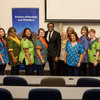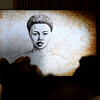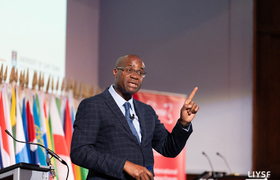Human factor is key to the mix in chemical engineering
29 March 2004Never build on weak foundations, as any engineer will tell you. The chemical engineers at UCT have put a different slant to this; after years struggling to graduate sufficient numbers of blacks and women, the former due to the inherited defects produced by the Department of Education and Training (DET), the department has turned things around. Monday Paper spoke to Professor Duncan Fraser, Dr Dee Bradshaw and Dr Jenni Case on the eve of the official opening of their spanking new building.
Arguably the leading chemical engineering research institution in Africa and the continent's foremost producer of chemical engineers (30% of South Africa's chemical engineers), and particularly black engineers (70% of the continent's chemical engineers), it took some tough decisions and not a little courage to turn things around.
A dramatic shift in student demographics and an increasing diversity within the student body over the past 15 years had forced a re-examination of the teaching and learning process in the undergraduate programme. The DET legacy had left most black students badly prepared for tertiary education. Most of these students fared badly in the programme, causing retention problems. They also took longer to graduate. All were cause for concern.
These factors were compounded by a "masked" element - the first-year intake of 80 students in 2004, for example, represents 16 to 19 different home languages and eight to 10 countries, concentrating the element of diversity in the already small groups.
Many of the department's early achievements were based on the introduction in 1988 of the Academic Support Programme in Engineering at Cape Town (ASPECT), which spread the curriculum for the first two years over three. This concentrated on support in critical first-year courses like maths and physics. ASPECT still assists students today (though there are more black students off the programme than on it) and it has become a model for other faculties and institutions.
A key milestone was Fraser's introduction in 1990 of collaborative study methods, a highly successful technique that had been used to teach minority groups in the States. It was novel and its introduction accompanied by huge anxiety among the teaching staff. But the results were startling. "It was the most exciting thing I had done as a teacher," Fraser recalled. "There was such a buzz in class. Working in groups, students would sit together for three hours to solve set problems."
The system also encouraged peer group learning, helping students to build helpful working relationships with others. They also learnt to communicate at a technical level, important for aspiring chemical engineers.
Between 1992 and 1998 the faculty undertook a curriculum development project to address other problems, moving to contextualisation, problem-solving and application-based learning. "This was matched by a change in attitude. From teachers blaming students for poor performance, they began to take responsibility for their performances," Fraser said. He believes that it helped having a departmental education development officer, Jenni Case (a post created after a generous donation from Caltex Oil). Case, with a master's degree in science education and PhD on the influence of the learning environment, lent credibility to the curriculum reforms.
"These developments set the scene for the outcomes based education system we adopted, in line with the Engineering Council of South Africa (ECSA) accreditation process," Fraser added. "We decided to be the first faculty in the country to be accredited on this basis, a year before it became obligatory."
The department now boasts a significant number of black students who are "doing well", with some graduating with honours. "The recent 1999 graduating class was a good example, with some top prizes going to our black students," Fraser said.
But there is an element to the turnaround that has defied quantitative analysis. The ingredients in the mix would have been nothing without the rising and binding agents: the human factors, what Fraser, Bradshaw and Case agree constitutes the department's shared value system. "It's a collegial ethos that encourages nurturing struggling students, encourages research, and particularly engineering education research," Bradshaw added.
This is in evidence right down to the administrative staff who deal with the students, including the sometimes feisty weekly departmental meetings and what Bradshaw describes as "boundarylessness". "It's built on team work and valuing people - and a group of committed teachers and postgraduate tutors who have a passion for teaching," Bradshaw added.
It could also be the high proportion of women with their generally intuitive and nurturing approach to teaching. Though Bradshaw is loath to push this, it has been widely acknowledged that women teachers generally spend more time with their students.
The transformation has brought its own successes. The thriving research and postgraduate programme is well supported by local and international industries, its graduates continue to provide vital skills to burgeoning industry, and it attracts a growing international postgraduate cohort.
As Case points out: "Success has bred success."
 This work is licensed under a Creative Commons Attribution-NoDerivatives 4.0 International License.
This work is licensed under a Creative Commons Attribution-NoDerivatives 4.0 International License.
Please view the republishing articles page for more information.










